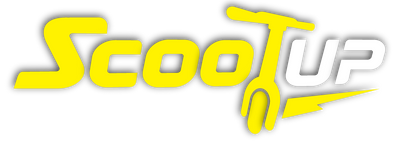The Pros and Cons of Fast Chargers for Electric Scooters
Electric scooters have exploded in popularity in cities around the world in recent years. Their compact size, ease of use, and eco-friendly profile make them a convenient way to zip around congested urban areas. Many electric scooter models now offer fast charging capabilities, allowing riders to recharge their scooter's battery pack in a fraction of the time it takes with a regular charger. But is faster charging always the best option for e-scooters? Below we dive deeper into the key benefits and drawbacks of using fast chargers versus standard chargers for electric scooters.
Pros of Fast Chargers
Convenience
The top advantage of fast chargers is the sheer convenience and time savings they provide. While regular scooter chargers may require 6-8 hours to fully recharge a depleted battery, fast chargers can often do the job in just 1-2 hours. For those relying on their e-scooter for daily transportation, minimizing downtime is hugely beneficial. Fast charging means you can quickly top up your charge between rides or over a short break. This helps keep you on the move.
Minimizes Downtime
By significantly reducing charging time, fast chargers minimize the inconvenient downtime when your e-scooter is out of action while charging. If you only have one scooter, fast charging means less time when you are left without your primary transportation option. For shared e-scooter services, faster charge times mean higher scooter availability and utilization rates.
Better for Frequent Partial Charging
If you rarely fully deplete your scooter battery in one trip, fast charging allows for convenient frequent partial charging. Doing multiple partial fast charges per day puts less strain per charge cycle on the battery compared to regular charging from empty. Frequent fast top ups may help extend the battery life over years of use.
Takes Advantage of Newer Battery Tech
Many modern high-quality e-scooter batteries use advanced Lithium-ion formulations that are designed to handle fast charging while minimizing battery degradation. This includes battery management technology to monitor voltage, temperature and prevent overcharging. The latest batteries optimize fast charging safety and scooter performance.
Cons of Fast Chargers
Higher Upfront Cost
The biggest downside of fast chargers is their substantially higher cost compared to regular chargers. Expect to pay $150 or more for an official fast charger from your e-scooter manufacturer, while regular chargers cost as little as $50-100. The extra cost may be difficult to justify if fast charging is not essential for your usage habits.
Potential for Battery Degradation
Despite recent improvements, fast charging a scooter battery still has some potential to degrade battery capacity faster over time compared to regular charging. The intensity of fast charging can put more strain on the battery materials. However, many manufacturers now offer 1 to 2 year warranties on their batteries to compensate.
Safety Concerns
Rapidly charging lithium-ion batteries generates significantly more heat than slower regular charging. This calls for proper ventilation and air circulation around the battery to prevent dangerous overheating. Never leave a fast charging scooter unattended, and avoid improper use that could create fire risks.
Higher Electricity Draw
To deliver a full charge faster, fast chargers require more amperage/electrical input from the wall outlet. This must be factored in when charging in a home or public place with limited electrical capacity. Tripped circuit breakers or electrical issues are more likely.
Fast chargers provide an extremely convenient way to minimize electric scooter charging time and downtime. But the higher costs, potential battery degradation, safety concerns, and electricity draw need careful consideration - especially if regular charging is sufficient for your usage needs. As charging technology improves, fast charging will likely become increasingly viable and safe for e-scooters.











